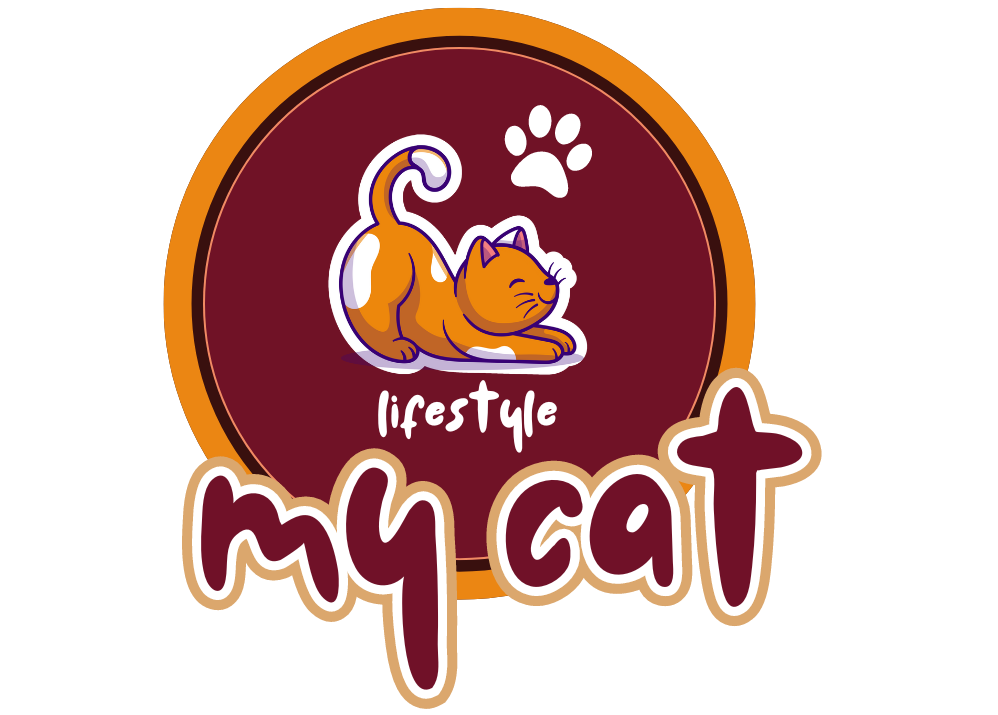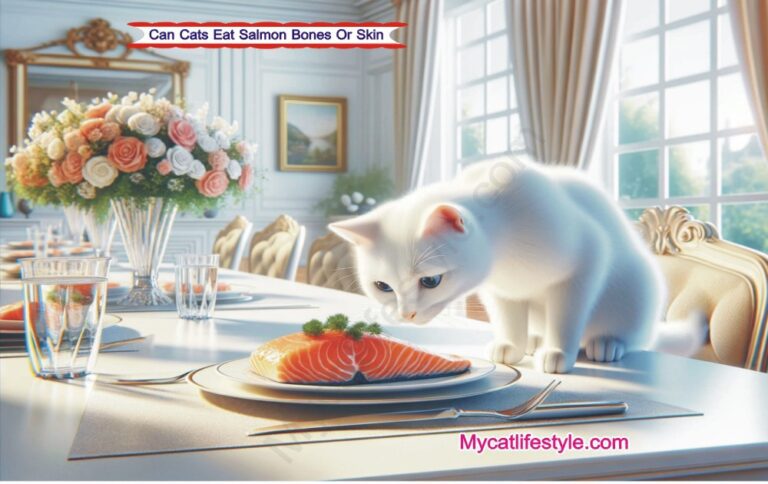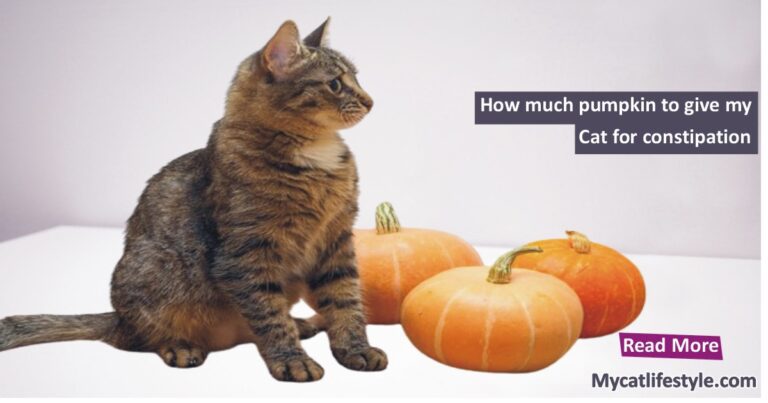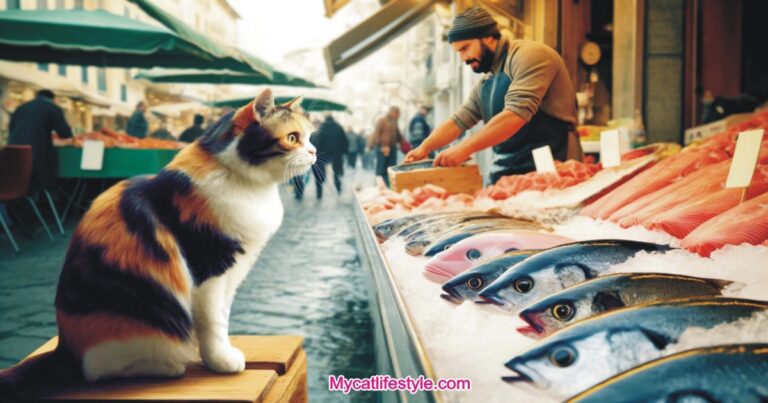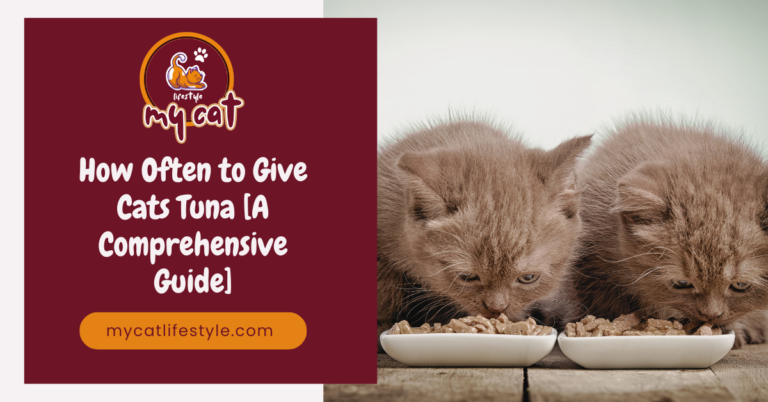My Cat Ate My Garlic Bread: What Every Pet Owner Must Do Immediately
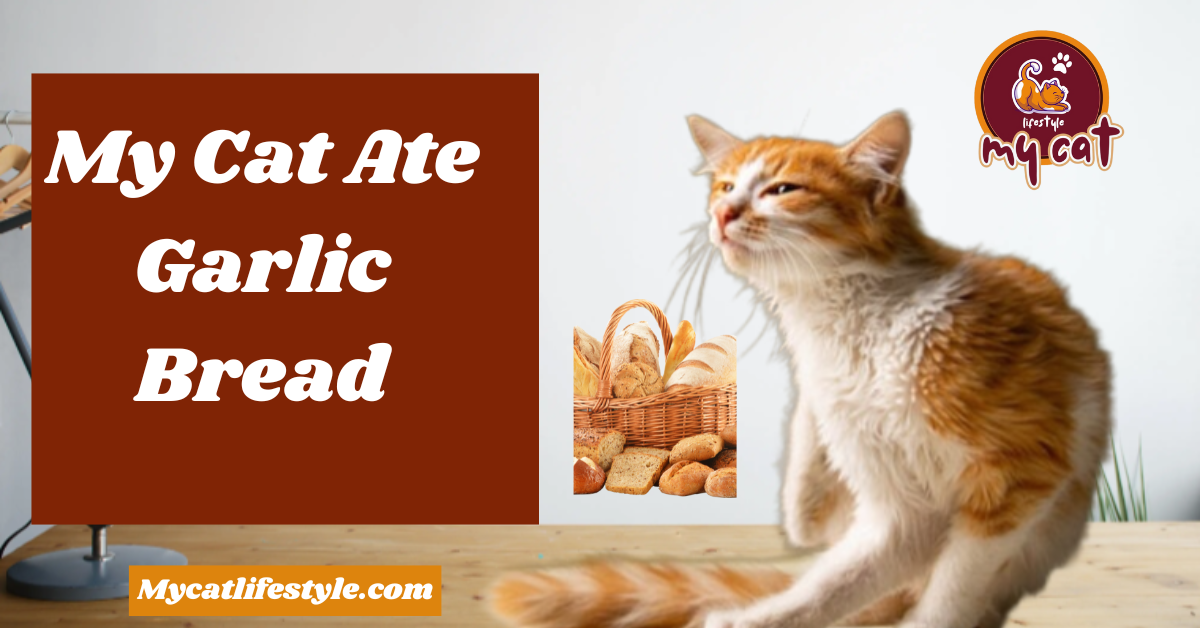
When Cabbage the cat managed to steal a small piece of my garlic naan, I was immediately concerned. My Cat Ate Garlic Bread? As a pet owner, I knew that garlic is highly toxic to cats, even in small amounts. Garlic belongs to the alliums family, along with vegetables like onions, leeks, chives, and shallots—all of which are poisonous to cats.
The symptoms of garlic toxicity can appear within hours or take a few days to show up, depending on the amount ingested. Even a small piece can lead to serious issues like anemia, which, in larger quantities, can result in organ failure or even death.
As soon as I realized what had happened, I took quick action. I removed any remaining garlic from her access and rushed her to the vet immediately. In such a scenario, fast action is crucial. The vet attempted to induce vomiting to remove the toxic substance from her body. Time is of the essence in these situations, so getting her to the vet within the right time frame was essential. Thankfully, I was able to monitor her condition closely due to her dainty size of 4.5kg, and after a couple of days, she started to recover.

My Cat Ate Garlic Bread?
When my cat snuck a bite of garlic bread off the counter, I learned the hard way about the dangers lurking in seemingly harmless human foods. Garlic, whether raw or cooked, is extremely toxic to cats. This Allium family member, which includes onions, leeks, and shallots, can cause serious health issues like gastrointestinal problems and hemolytic anemia. It’s important for cat owners to understand that even small amounts of these foods can be dangerous.
After noticing the bite, my immediate action was to consult my vet who recommended a swift visit to the clinic. There, my cat was checked and evaluated thoroughly to prevent any severe complications from the ingested garlic.
The internet is rife with videos of cats snatching loaves of bread, but foods that are safe and healthy for humans can often be a hidden danger to our younger and smaller animal companions. My vet’s advice was straightforward: avoid letting cats eat anything from the Allium family.

Cats should consume diets specifically tailored for them, free of any toxic ingredients. This incident was a wake-up call to keep all such foods well out of reach and to ensure my home is a safe environment for my feline friend’s future. Keeping cats away from tasty but dangerous dishes is a simple yet crucial step every pet owner should take.
Is Garlic Bread Safe for Cats?
Despite its popularity among humans, garlic bread poses significant risks to cats. Garlic, along with onions, leeks, chives, and shallots, belongs to the Allium sativum genus, which is known for its culinary and medical uses in humans but is toxic to pets.
When cats ingest garlic, either raw or cooked, it leads to the release of organosulfur compounds. These compounds, particularly gamma-glutamylcysteine and cysteine sulfoxide, undergo a transformation into thiosulfinates through enzymatic reactions involving alliinases. These thiosulfinates are unstable and can cause severe damage to a cat’s red blood cells, leading to hemolytic anemia and other gastrointestinal issues.
The active substances in garlic result in the fragmentation of blood cells, a process exacerbated by the mechanical actions of crushing, chewing, or pressing garlic. This makes any food product containing garlic, like garlic bread, a health risk to cats. Even trace amounts can cause symptoms ranging from mild gastroenteritis to severe systemic health problems, as these substances readily enter the bloodstream and wreak havoc.
Thus, it’s crucial to keep such foods well away from your kitty to prevent any accidental consumption that could lead to serious health consequences.

How much garlic is poisonous for cats?
Garlic is incredibly toxic to cats, and it doesn’t take much to cause severe toxicity. According to sources like PetMD and the American College of Veterinary Pharmacists (ACVP), even small amounts of garlic can be life-threatening. For an average cat weighing about 10–12-lb, consuming just a 4–7-gram clove of garlic, or even 1/2 teaspoon of minced garlic, or 1/8 teaspoon of garlic powder can lead to devastating effects on their health. This toxicity level is due to the potent organosulfur compounds in garlic which are much stronger in garlic compared to other Allium plants like onions and leeks.
Toxic Dose Ranges for Cats:
- Cats weighing 1–10 lbs: Poisoning can occur from as little as 0.75 oz of garlic or garlic-containing products.
- Cats weighing 11–25 lbs: The threshold increases slightly to about 0.85 oz.
Factors Influencing Severity of Poisoning:
- Amount ingested: The more garlic consumed, the more severe the potential poisoning.
- Concentration of garlic: Higher concentrations of garlic lead to more severe effects.
- Cat’s size and weight: Larger cats might ingest more before showing symptoms.
- Health status: Cats with underlying health conditions may be more vulnerable to poisoning.
Breed Sensitivity:
- Certain breeds are more susceptible to garlic toxicity, including:
- Siamese
- Burmese
- Singapura
- Turkish Angora
- Oriental Shorthair
- Japanese Bobtail
Symptoms:
Cats may show symptoms even with tiny amounts, depending on breed and health.
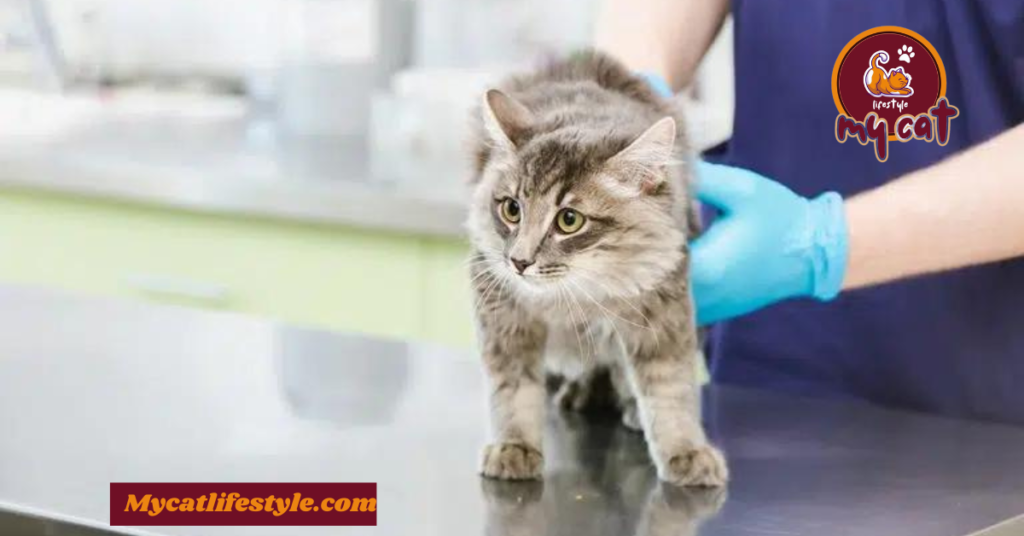
My Cat Ate Garlic Bread, What Do I Do?
- Prevent them from eating anymore:
Immediately ensure that all remainder of the garlic bread is removed and that your cat no longer has access to it. Garlic and other allium vegetables like onions are extremely toxic to cats, and preventing further ingestion is crucial.
- Call your vet immediately:
Inform your vet of the situation without delay. Be prepared to provide details such as how much garlic bread your cat ate, how long ago the incident occurred, your cat’s weight, breed, and any signs of illness or existing health issues they might have. This information will help your vet assess the severity of the poisoning.
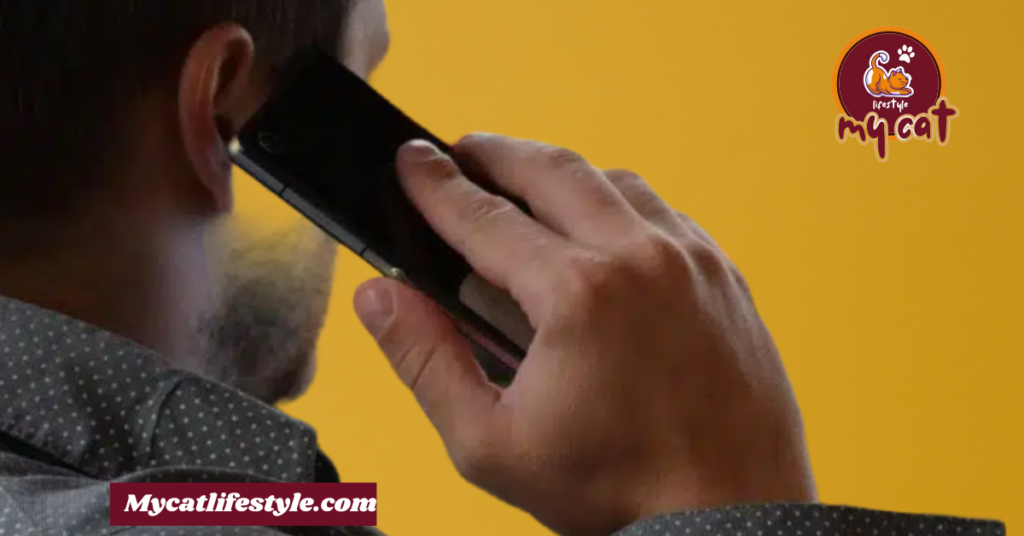
- Take your cat to the vet as soon as possible:
Follow your vet’s advice to bring your cat to the hospital immediately. It is important not to try to induce vomiting at home as this can be dangerous. Make sure to supervise your cat continuously during transit and do not leave them alone at any time.
Additionally, you can contact the Pet Poison Helpline or the ASPCA Animal Poison Control Centre for further advice on handling the ingestion of poisonous substances. While these services provide valuable guidance, they are supplementary, and taking your cat to your vet remains the priority for immediate and appropriate treatment.
What Are the Dangers of Cats Eating Garlic Bread?
When cats consume garlic bread, they are exposed to garlic—either raw or cooked—which contains sodium n-propyl thiosulfate, a compound that can be extremely toxic to them. Even small amounts found in cloves, dried, minced, or frozen forms used in such ready-made food can lead to significant damage to their red blood cells, causing them to rupture.
This results in hemolytic anemia, a life-threatening condition where the body’s ability to transport oxygen is compromised due to the reduced efficiency of the blood.
If left untreated, the damage from garlic toxicity can escalate, leading to organ failure and, in severe cases, death. The toxins from garlic affect the organs by depriving them of necessary oxygen, impairing their function and causing systemic failures throughout the body.
This makes garlic bread, and similar products containing garlic ingredients, highly dangerous for cats to eat. Pet owners should be vigilant in keeping such foods out of reach and seek immediate veterinary care if their cat accidentally consumes any amount of garlic, as quick intervention is crucial to prevent serious health complications.
What Are the Signs of Garlic Toxicity in Cats?

When a cat ingests garlic, the symptoms of toxicity can manifest rapidly, often within an hour and sometimes up to 4 days after exposure. The severity and onset of symptoms can vary significantly depending on the amount of garlic ingested, its concentration, and the cat’s tolerance to toxins. Here are key signs to watch for, indicating that immediate veterinary attention is needed:
- Reduced appetite
- Lethargy
- Fatigue
- Vomiting
- Diarrhea
- Difficulty breathing
- Increased heart rate
- Pale gums
- Red or brown urine
- Collapse
Each of these symptoms signifies a serious reaction to garlic and warrants a swift visit to the vet. If you notice any of these symptoms after your cat has had access to garlic, it’s crucial to act immediately to mitigate more serious health consequences.
How Is Garlic Poisoning Diagnosed in Cats?
When a cat shows clinical signs of illness after consuming garlic, it is crucial for the veterinarian to quickly determine if garlic poisoning is the cause. The diagnostic process begins with a thorough examination and a detailed history of the cat’s recent diet and behavior changes.
Vets often ask about the time of ingestion, the type of garlic products ingested, and any noticeable symptoms that have started to manifest. This history is vital as it helps the vet assess the likelihood of toxicity and its severity.
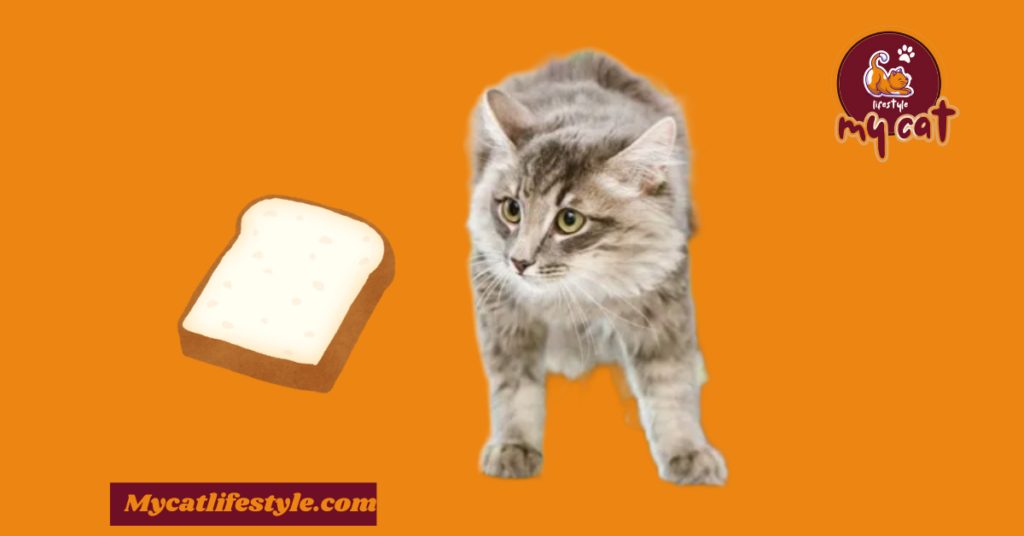
To confirm the diagnosis, a series of tests are conducted, including a complete blood count (CBC), urinalysis, and blood chemistry profile. These tests help identify specific markers like hemolytic anemia, a common result of garlic toxicity in cats. The CBC may show abnormalities in red blood cells, while the blood chemistry can reveal organ function alterations due to toxin exposure.
In cases where garlic ingestion is recent, gastrointestinal contamination may still be present, and efforts to decontaminate the stomach can be initiated. Early detection and treatment are essential to manage the toxic effects and ensure the cat’s recovery with minimal long-term health impacts.
What are the symptoms of garlic poisoning?
When an adult, healthy cat exhibits symptoms after interacting with garlic, whether from chopped garlic in a dish or garlic seasoned with onion powder, a prompt response is crucial. Symptoms of garlic poisoning can take two to four days to manifest and include gastroenteritis, which is an inflammation of the stomach and intestines, and anaemia, a serious condition that affects the cat’s red blood cells.
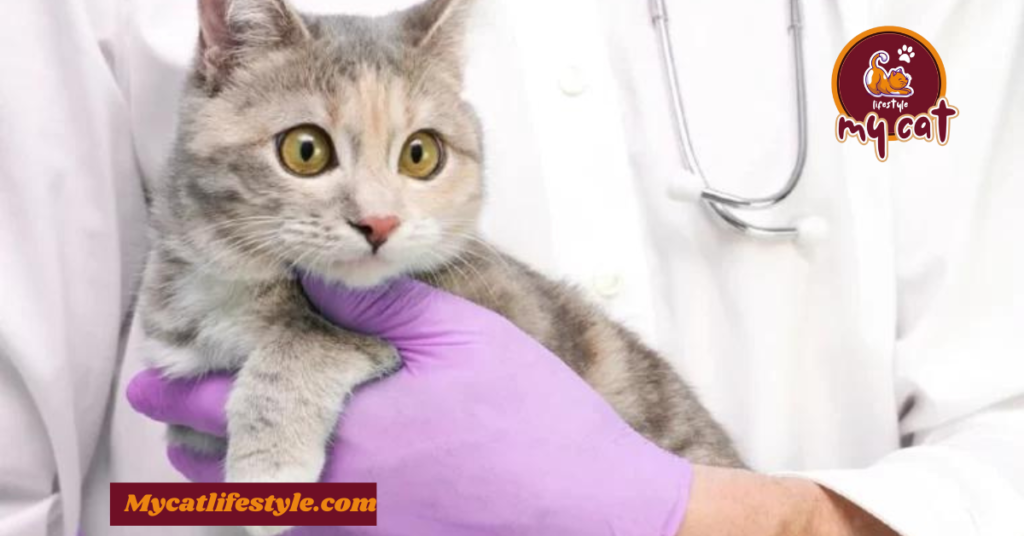
These symptoms help veterinarians distinguish the severity of the poisoning and guide the diagnostic process, involving a thorough examination and possibly blood tests to confirm the diagnosis and tailor the treatment plan.
| Gastroenteritis | Anaemia |
| Nausea Drooling Vomiting Diarrhea Oral irritation Abdominal pain | Lethargy Weakness Fatigue Collapse Pale gums Elevated heart rate Increased respiratory rate |
What Is the Treatment for Garlic Poisoning in Cats?
The treatment for a cat that has consumed garlic heavily depends on how long ago the ingestion occurred. If the ingestion was recent, a veterinarian might induce vomiting to remove the toxins from the stomach before they are absorbed further into the bloodstream.
This is typically done at a clinic with injectable medications that are safe for use in such sensitive animals, as attempting to induce vomiting at home can be harmful. Additionally, gastric lavage might be performed to cleanse the stomach, and activated charcoal may be administered to absorb any remaining toxins.
In more severe cases, where symptoms of toxicity have started to affect the cat’s health, supportive care is crucial. This includes administering intravenous fluids to combat dehydration and support kidney function, and in cases of significant anemia, a blood transfusion may be necessary.
Continuous monitoring of the cat’s condition in the clinic is essential to adjust treatment as needed and to prevent the worsening of their health. For any external exposure, such as garlic oil on the skin, a thorough bath may be required to remove the toxic substance to prevent the cat from licking and further ingesting it.
What Are the Causes of Garlic Toxicity in Cats?
Garlic toxicity in cats is caused by the ingestion of any product containing garlic. The toxicity varies based on the amount of garlic ingested, the cat’s health status, size, and breed.
Garlic contains toxic compounds that can affect cats much more than dogs, who are also susceptible but to a lesser extent. Even a small clove of garlic can cause poisoning in cats, leading to severe health issues.
What Will Your Vet Do?
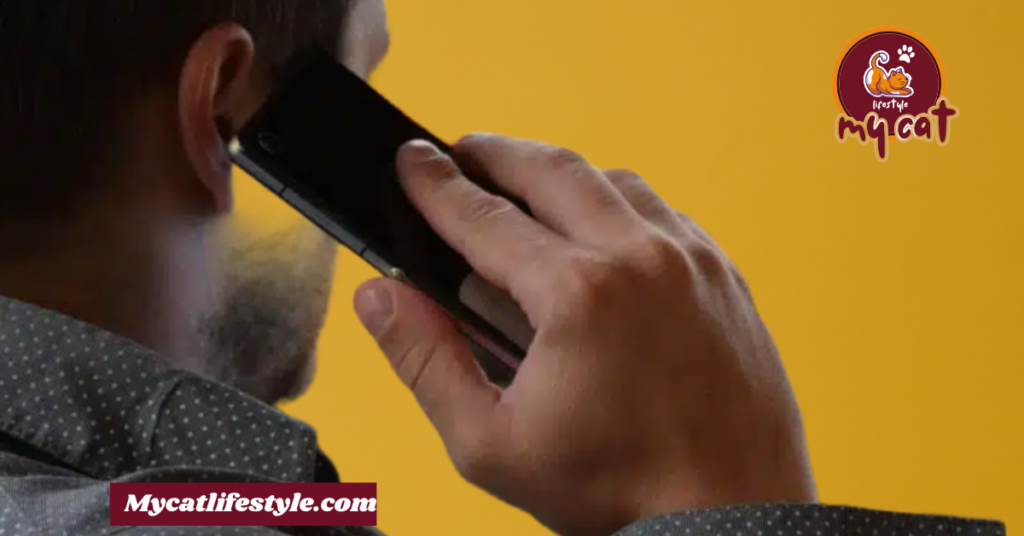
Upon suspecting garlic toxicity, your vet will take a full history and perform a detailed examination. They may analyze a blood sample under a microscope to detect sodium n-propyl thiosulfate, a toxic compound in garlic that causes structural damage to red blood cells, evident by the presence of Heinz bodies indicative of hemolytic anemia. Treatment may involve inducing vomiting if the garlic was ingested within the last 2 hours, performing gastric lavage, and administering activated charcoal to absorb toxins.
Supportive care like intravenous fluid therapy, oxygen supplementation, and possibly a blood transfusion are provided in severe cases.
The Prognosis for Garlic Toxicity in Cats
The prognosis for cats that ingest small amounts of garlic and receive prompt veterinary attention is generally good, with cats often recovering without long-term complications.
However, ingestion of high amounts can lead to a poorer prognosis, potentially resulting in fatal hemolytic anemia.
How Much Garlic is Toxic to Cats?
Garlic is extremely potent, and small amounts can be toxic. It is believed that less than one clove can cause toxic effects in an average-sized cat.
The exact amount can be hard to quantify, especially in garlic bread and other foods, so any ingestion should be considered dangerous and treated immediately.
How to Prevent Garlic Toxicity in Cats
Cats are naturally inquisitive creatures and may be enticed by garlic bread left out or garlic-containing foods during cooking. To prevent garlic toxicity, keep all garlic products securely stored away in drawers or cupboards and ensure your cat does not have access to them.
Never leave garlic-containing foods like garlic bread cooling in open areas where a cat might jump up and taste it.
Frequently Asking Questions
What happens if a cat eats garlic bread?
Garlic, whether in bread or alone, is toxic to cats. Consuming garlic can cause gastrointestinal upset initially, and with higher doses, it can lead to more severe conditions like hemolytic anemia, where red blood cells are damaged. Symptoms can include vomiting, diarrhea, lethargy, and in severe cases, organ failure.
What to do if my cat ate garlic?
If you know or suspect that your cat has ingested garlic, it is important to act quickly. Remove any access to garlic or garlic bread and monitor your cat for any signs of distress. Contact your vet immediately, as they may advise you to bring your cat in for an examination and treatment, which might include inducing vomiting or administering activated charcoal to absorb the toxins.
How much garlic is toxic to cats?
The toxicity threshold for garlic in cats is very low. As little as one clove of garlic can cause toxicity in cats, even less if the garlic is concentrated, such as in garlic powder or cooked into foods like garlic bread.
What happens if a cat eats bread?
While plain bread is not toxic to cats, it is not nutritionally beneficial for them and can contribute to obesity. However, bread with additional ingredients like garlic can be dangerous, as mentioned above. Always keep bread and other human foods out of reach of your cat to prevent any accidental ingestion.
Conclusion
In conclusion, if your cat has eaten garlic bread or any food containing garlic, it’s crucial to understand the risks involved due to the organosulfur compounds present in garlic, whether raw or cooked. These compounds, when ingested by cats, can cause dramatic effects ranging from mild gastrointestinal upset to severe toxicity that can be fatal.
The severity of poisoning often depends on the amount of garlic ingested and the weight of your pet. Even a small mouthful can cause significant health problems.
Therefore, it is important to avoid exposing your cat to any garlic-containing products and seek immediate evaluation from your vet if ingestion occurs. Prompt action and careful monitoring can help your cat recover well, even from small amounts, and prevent any long-lasting effects.
Related posts:
- Why does my cat hate her kittens?
- My Cat Stopped Purring When I Got A New Kitten – Exploring
- Why Do Cats Move Their Kittens?
- My Cat Ate a Rubber Band: What Should I Do? (Vet Answer)
- Why Does My Cat Blink One Eye? Exploring the Reasons Behind This Feline Behavior
- How do you stop a cat from jumping on a TV stand?
- ats Shake Their Heads When Eating?
